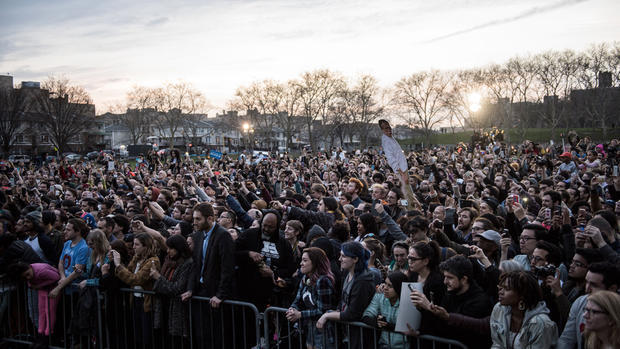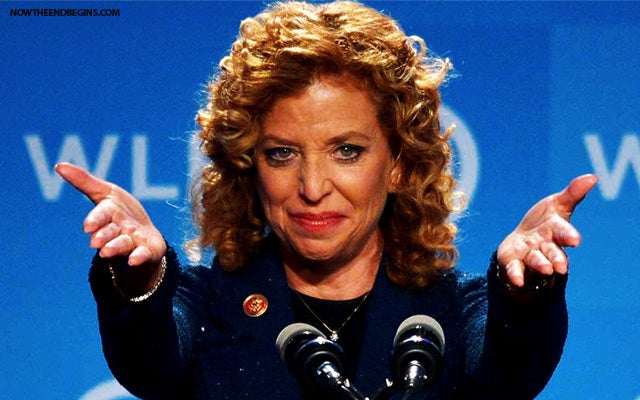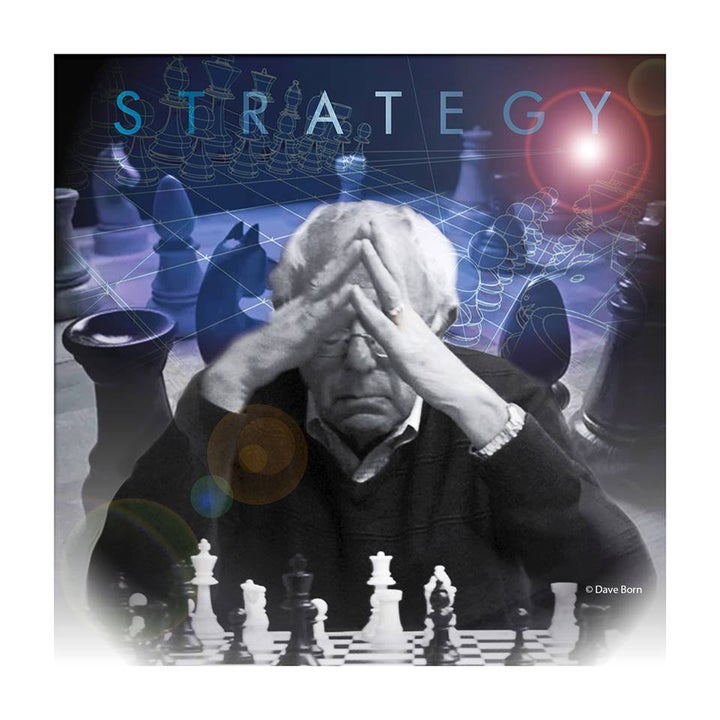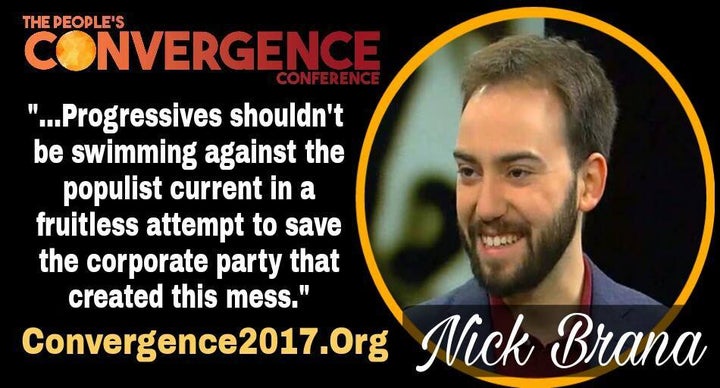
Getty Images
For the first time in over 150 years, there is serious, realistic, public discussion of starting a new major political party, with a first step, a planning Convergence, held in DC, September 8-10, 2017. The new party will be Progressive and therefore potentially born enormous. Voters who take Progressive stands on key issues — those who oppose corporate welfare, invasive wars and corruption, and support 21st century infrastructures, social justice, help and opportunity — are 66% of the population. That number will grow because Millennials including the kids who will first vote in 2018 are overwhelmingly Progressives.
Yet as it stands, the country’s Progressive supermajority, because it exists in a thousand tiny groups and controls no political party, has no powerful representation in U.S. government. Deeply entrenched, both Democratic and Republican party leaderships call themselves “centrist” but are rightist — pro-war, in favor of ripping up social safety nets to lower taxes on the richest, etc. — and routinely accept large “donations” from corporations which the politicians later reward with taxpayer subsidy. Only 18% of Independents think that the Democratic Party is in touch with the average person; only 28% of Democrats think that their own party is. Republicans score only slightly better.
People have left the old parties.
By 2020, according to Gallup polls, over half the voters in the United States will be registered Independent, not a party but a nonpartisan stance.
Corporate media scramble to explain, insisting that it “means nothing” that the old parties are hemorrhaging voters, because given a choice only between Democrats and Republicans in elections, with tiny parties challenging, individual Independents lean toward the party to which they once belonged. True. What the mainstreams don’t say is that 58% of voters want a new major party, a third alternative. Among Independents, the younger and more active half of the nation, that desire for a viable new party jumps to 71%.
Pundits next insist that the U.S. winner-take-all two-party system makes any victory by a third party “almost impossible.” Not the case. Drained by decades of voters leaving, Democrats and Republicans are down to less than a fourth of the U.S. voters each, already minority parties. “Dark Money Parties” run by billionaires are like parasitic growths operating on and through the old parties, further weakening them.
Voters are ready for genuine change. A poll taken right before the November 2016 election showed that, had the rigged Democratic primaries ending that June not stopped Bernie Sanders from running in November, he would have beaten Donald Trump.
That was true even in the electoral-college swing states that Hillary Clinton lost.
Indeed, Sanders would have won with 56% of the vote nationwide, a landslide that would have also swept Progressives into Congress. It was Sanders himself in June 2016 who stopped his supporters from turning the campaign into a new political party, going after the presidency with it. Now many Progressives are determined not to stop.
The first progressive Convergence is being convened at the American University, Sept. 8-10: three Progressive groups calling all Progressive individuals and groups to discuss whether operating within the old Democratic Party still makes sense, and if not, how best to activate the scattered supermajority...and get it going. Envision U.S. voters as droplets in a vast body of trapped water, its great combined weight surging against the crumbling two-party system, droplets finding all the cracks, rivulets of people following key individuals who are finding ways out, cracks widening, as the dam breaks....

Nobody Shores Up An Intact Dam.
Wait. Look at it from another perspective. If the Two Party “dam” against the rise of a new party were as mighty as the “impenetrable two-party system” proponents pretend, party leaders would not be shoring it up by any-means-necessary.
For the last three decades, they’ve been frantic. The Dems and Reps incorporated together in 1989 to seize control of presidential debates, and they exclude third party candidates. They orchestrate media blackouts to suppress third party messages. One effect of mass incarceration, initiated by Bill Clinton but continued under Bush, Obama and Trump, is taking voting rights from millions of people on often the flimsiest of pretexts. Republicans instituted big data gerrymandering, which can cancel out voter decisions in elections.

The Democratic leaders even invented “superdelegates,” party hacks given far more power in the Democratic Party nomination process than rank and file members have.
Openly horrified by the thought of democracy rising within the Democratic Party, former Democratic National Committee [DNC] chair Debbie Wasserman Schultz explained that the purpose of superdelegates is “ to ensure that elites don’t have run against grassroots activists”.
Yet stopping the majority within the party in 2016 took even more than all of those moves. It required electoral fraud. Measured either by numbers of Progressives, or by what has been required to hold the line against them, the active pressure for Progressive change both inside and outside the Democratic Party is demonstrably immense. So what exactly is fueling, and what is preventing, the rise of a supermajority Progressive party?
The Day in 2016 That A New Progressive Supermajority Party Almost Popped into Existence
Senator Bernie Sanders did not enter the 2015-16 Democratic primary race in order to win it. The 75-year-old firebrand hoped simply to “change the conversation”, to focus the nation’s attention on the ice cold billionaires sucking the U.S. economy dry while diverting tax funds from human needs into corporate subsidy.
That message however reached the Gen-X/Millennials, the people under 50 who had grown up online, watching their human birthrights of democracy, justice and prosperity frittered away. At their core were Occupy Wall Street veterans, bringing with them fundamentally new methods of funding and communication.
Within a month, 28,000 people filled a single Sanders’ rally.
Seeing the response, even Neoliberal Hillary Clinton increasingly echoed Sanders’ Progressive statements. Donald Trump also adopted Sanders’ stances on 21st century infrastructure (yes), cleaning up corruption (yes) war (no), treaties like NAFTA and TPP failing to protect workers and the environment while legally subordinating nations to corporations (no) etc. The difference was, Sanders meant it. Sanders however was half way through the Democratic primaries before he realized that he could win.
The young generations carrying him had never doubted it....
In June, 2016, Sanders “lost” the blatantly fraudulent Democratic primaries to Hillary Clinton. That stopped the Sanders campaign from going forward into the general election in November on the Democratic ticket. Sanders was however an Independent, had been for over 40 years. The campaign had the organization, the funding, the voters and the communications in place for a new party, and his supporters were willing to put in whatever work a victory in November might take. Bernie Sanders in June 2016 had a 60% approval rating while Donald Trump and Hillary Clinton had approval numbers below sea level. Once outside the Democratic Party, in a race where Independents also could vote, Sanders clearly could take Trump or Clinton in three-way race.
His supporters therefore pressured him to run the rest of the way as an Independent....

“Strategy” by Dave Burn
Sanders refused.
Jill Stein, presidential nominee of the Green Party, offered Sanders the Green Party ballot access.
Sanders reportedly never returned her calls, as he had not throughout the primaries.
Supporters offered evidence of voter fraud in numerous states, asking Sanders to sue.
Sanders reportedly never returned those calls either. Sanders also never took his supporters into a promised fight for the nomination on the floor of the Democratic Convention. He did not even stand up for his delegates when they were harassed and driven from the Democratic Convention. Instead “to prevent a Trump presidency”, Bernie Sanders went on the road stumping for Hillary Clinton, who had deliberately helped launch Trump. Explanations for the seachange in Sanders — theories which stop just short of alien abduction —abound. Pairing himself with Clinton between August and November 2016, Sanders, who only months before had commanded 20,00-30,000 person rallies from one coast to the other, suddenly could not get 100 people in a room.
Trying Either To Activate or To Push Past the Sanders Effect
Regardless of where you sit on the subject of Sanders, this is fact: Where that gargantuan presence sits on the U.S. political seesaw matters. Deeply loved and trusted by an astonishingly wide variety of people, with sufficient stamina to consistently drive his young supporters into the ground, Trump’s most effective opponent in Congress, Bernie Sanders remains the most popular politician in the country and in the world, with positives among diverse groups that are off the charts.
So after the 2016 election, Progressives again called for a new party and again invited Sanders.
Sanders — although still registered Independent — focused instead on the Democratic Party! Both the Democratic and Republican parties by 2016 were skeleton crews, with exceptionally vicious leadership groups but/therefore barely staffed at state and local level. Urging its Progressive majority to seize control, Sanders argues that the Democratic Party already exists, so there’s no need to build a new one, in most states it is largely an empty shell, and it brings with it for example ballot access. Many Progressive like his friend Dr. Cornel West point out however that the Democratic party’s hidebound leadership — the same Clinton-wing that knowingly helped Trump and thus activated white nationalists in order to scare people into voting for Hillary...that will in other words stop at nothing — is kneecapping Democratic Progressives who look as though they might win at the polls.
Sanders’ massive force, even as he tries to “unite” un-unitable Democrats, 28% of the voters, divides the Progressives, 66% of the country.
He’s also arguably shooting himself in the foot. When Sanders goes against his own principles, like calling for regime change in Syria, a huge chunk of “his” people turn away from him. The angry rumor now is that Sanders is the last of the great stalking horses, the men who like Obama with his $400,000 speaking fee kept the people in line until it was too late. The dangerous alternative to Progressives finding a united way out, and soon, is meanwhile being offered by gtoups billionaires, the Dark Money parties. That is a far cry from one person one vote representative democracy, of, by and for the people.
Somebody needed to act to pull the scattered pieces together. Consequently, many “somebodies” have. One worthy effort is the Convergence....
The First Convergence
Only 11 days away, the progressive Convergence on September 8-10, 2017, in Washington DC at American University, is basically three groups — the People’s Independent Party [PIP], Draft Bernie for a People’s Party [DB], Socialist Alternative [SA] — more recently, plus Justice, calling out to the others to come together.
Progressives of every generation are drawn to activism: saving a library, getting bike paths, planting gardens in inner cities or pushing for universal healthcare. So Progressives are on their feet, and not just in political parties like the Democrats and Greens, but in issue-oriented groups like Water Is Life, Sierra and Black Lives Matter or in the smart honest people running for office. The major thing they have to do is link, in their thousands. (Got a little organic gardening club? Reach out to La Raza. Link. Both of you reach out to the Greens. Link. You three contact Socialist Alternative. Link. Do something, anything, to build the Progressive supermajority party. It all adds up.)
Party building in the Internet age with sufficient people is swift. The Greens had tried for 25 years to get on the ballot in every state. After the loss in the Democratic primaries, Sanders folk took up the remaining needed petitions and got the Greens on ballots across the country in two months. There are few intractable problems, given a coalition.
Granted, group egos do intrude. Some within the huge Progressive population think that the unifying party must bear their name or they won’t join it. Others will discuss nothing unless it begins with an explicit rejection of the concept of Property. Still others will discuss nothing unless it includes/excludes Sanders. Yet another crew is dealing with “circular firing squad psychosis”, tearing down other Progressive groups and dishing dirt on leaders in an effort to put themselves forward.
Therefore, the Convergence takes a seven-pronged approach to the challenge of acknowledging and linking Progressive groups nationwide.

by Milly Mac
- First, all Progressive groups and individuals are invited to the DC discussion, not just some, as has occurred in the past. Speakers and panel discussions will include a wide variety of topics from income inequality to climate change, getting corporate money out of electoral politics, divesting and nonviolent direct action.
- Second, major effort is being made to get Bernie Sanders to shift from “uniting” the Democrats, 28% of the voting population and viciously divided, to instead helping unite Progressives, 66% of the voting population. An invitation/petition to a Sept. 9 town hall meeting with 50,000 signatures from people who volunteered and voted for him will be hand-presented to Sanders on his birthday, Sept 8. At the town meeting, he could debate the options with his friend Dr. West.
- Third Jill Stein, 2016 Green Party presidential nominee purportedly left out of the Democratic People’s Summit, has been invited to speak; the doors are open.
- Fourth, the Convergence is being held as the new semester begins in DC, and is open to students from DC’s colleges and universities, including Georgetown University, Howard University and the American University where the Convergence will be held.
- Fifth, streaming video will empower interactions from sister gatherings, set up in private homes, groups and other universities across the country. it will be streaming on Facebook.
- Sixth, reporters like TNT’s Jordan Chariton of Standing Rock fame, and commentators and satirists like Lee Camp, Jimmy Dore and Tim Black will be on hand and broadcasting during the three-day discussion.
- THE CONVERGENCE IS AN OPENING MOVE. The first rule of mass mobilization, in the effort to get all our people safely and swiftly over the wall, is, “Don’t stand on each others’ faces! Help each other up!”